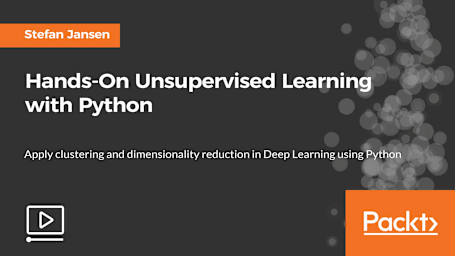
Hands-On Unsupervised Learning with Python
This course explains the most important Unsupervised Learning algorithms using real-world examples of business applications in Python code. Say you have millions of transaction data on products purchased at a retailer. Which individual products or product categories are most likely to be purchased together? How about a large number of survey responses: which answers were most often given together, for all or some subset of respondents? Association Rules provide answers to these questions, and they are most frequently used in Market Basket Analysis. The Apriori Algorithms solves the formidable computational challenges of calculating Association Rules. After taking this course, you will be understanding and be able to apply the Apriori Algorithm to calculate, interpret and create interactive visualizations of association rules. Suppose you are a nutritionist trying to explore the nutritional content of food. What is the best way to differentiate food items? By vitamin content? Protein levels? Or perhaps a combination of both? Use Deep Learning and Unsupervised Learning to find out. This course will allow you to utilize Principal Component Analysis, and to visualize and interpret the results of your datasets such as the ones in the above description. You will also be able to apply hard and soft clustering methods (k-Means and Gaussian Mixture Models) to assign segment labels to customers categorized in your sample data sets. After watching this course, you will know how to apply the basic principles of Unsupervised Learning using Python. All the code and supporting files for this course are available on Github at https://github.com/PacktPublishing/Hands-on-Unsupervised-Learning-with-Python. Style and Approach: This friendly course takes you through the basics of Unsupervised Learning. It is packed with step-by-step instructions and working examples. This comprehensive course is divided into clear bite-size chunks, so you can learn at your own pace and focus on the areas of most interest to you.
Target Audience
The audience includes analysts and data scientists that want to understand key applications of Unsupervised Learning from both a conceptual and practical point of view. Prior Python programming experience is a requirement, and experience with data analysis and machine learning analysis will be helpful.
Business Outcomes
- Select and apply key Unsupervised Learning methods to discover hidden structure in data, in particular: Conduct, interpret and visualize market basket analysis on transaction data
- Understand how Principal Component Analysis works and apply dimensionality reduction using scikit-learn
- Implement, evaluate and visualize the results of cluster algorithms







